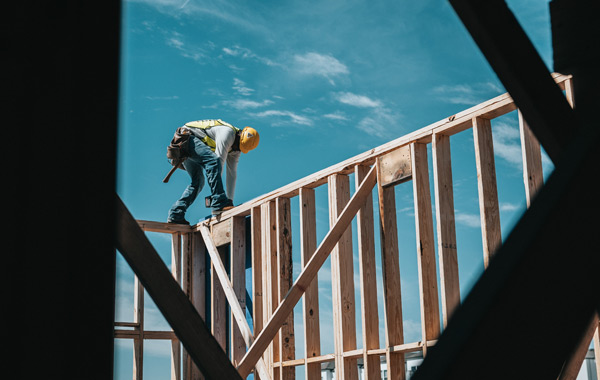By Richard Lyall,
RESCON
The system of manufacturing modular or prefabricated buildings off-site has been gaining momentum and could put a significant dent in demand for traditional site-built brick and mortar construction.
More residential and ICI (industrial, commercial and institutional) buildings will likely be built using modular or prefabricated practices in future. With this type of construction, separate building modules can be made in a factory and then brought to a construction site, where they are assembled and finished in less time than a conventional build.
Making progress
Today, modular construction is used to build residential, commercial, health care and other types of buildings. Most using this type of construction are presently low- and midrise structures, but its use in taller buildings will likely rise as the population and need for affordable housing grow.
Toronto is making progress using modular housing to address affordable housing. Recently, the city welcomed residents to its first modular housing building in Scarborough. Toronto has also committed to providing 1,000 new modular homes to those in need over 10 years as part of the HousingTO 2020-2030 Action Plan.
Modular or prefabricated housing can offer myriad cost-saving advantages over site-built housing, including faster construction times and less disruption surrounding the project site. For example, construction can take place year-round because the product is made in a climate-controlled environment.
Multiple benefits
The environment and community benefits because less work is completed on-site, which means less noise, congestion and mess for residents. The conditions are safer for workers, as there is less exposure to extreme weather, and construction costs and projects schedules are more predictable for builders.
The buildings are designed to the same codes and standards as conventionally built facilities. The ability to use precise manufacturing equipment and processes enables the product to be quality controlled with a reduction in waste.
RESCON strongly supports the idea of increasing the use of modular and prefabricated building components in residential building projects because we must find a way to produce more housing for the increasing population. While the industry is going flat out, we are still short about 12,000 housing units a year.
With the move to Greener construction practices, combatting climate change and reducing carbon emissions, modular construction practices make perfect sense for developers and the public.
Significant investments
Going forward, manufacturers will have to make significant investments in their operations as developers will need certainty that the products will be available. More investment by the manufacturers will bring economies of scale and, hopefully, result in lower costs which can be passed on to consumers.
To increase the use of closed panels and modules, however, we must have a modernized building regulatory regime that includes reference to updated standards. The latest version of CSA A277, for example, is not yet referenced in the Ontario Building Code and therefore needs to be updated.
CSA A277 provides for pre-engineered off-site production of modules and panels. Certification of factories means that manufactured modules that use advanced engineered and construction techniques do not need to be opened for inspection when they arrive on a building site. Certification of the factory by an accredited body and labeling of the components means that local building inspectors can rely on the factory certification to comply with the relevant building code requirements.
There is a dire need for more housing in Ontario. We have a significant deficit, and the trend shows no signs of abating. Canada is set to welcome 401,000 immigrants in 2021, 411,000 in 2022 and 421,000 in 2023. Immigration is the key to our economic growth, but the newcomers need a place to live.
We must pick up the pace of housing construction as a shortage could have serious consequences for our province and housing affordability. Modular and prefabricated housing won’t solve the problem entirely, but it’s a start.
 |
Richard Lyall, president of RESCON, has represented the building industry in Ontario since 1991. |










